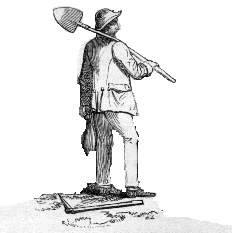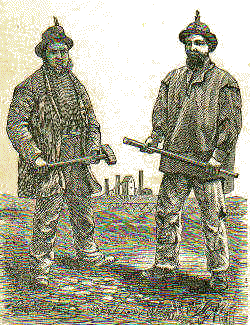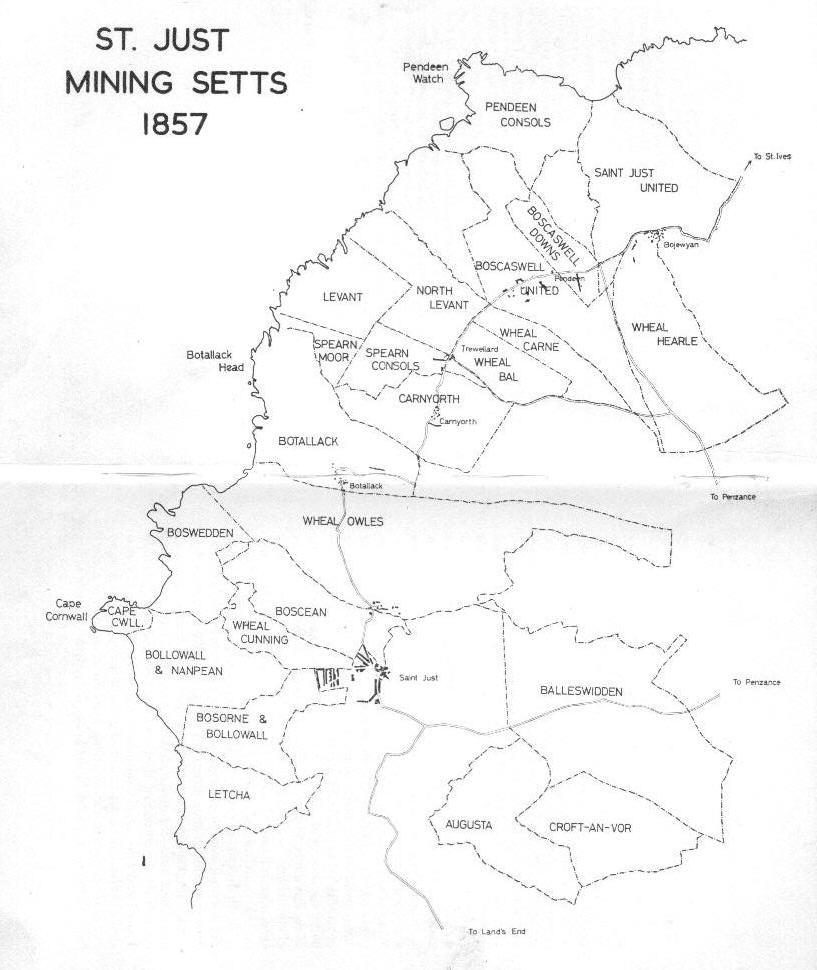
Mining
in the Blood 

- - - - - - - - - - - - - - - - - - - - - - - - - - - - - - - - - - - - - - - - - - - - - - - - - - - - - - -
As the notes below show tin mining has a long history in Cornwall:
Notes
on the coinage of tin in
devon and cornwall in 1595. As
reported in the state papers of the Reign of Elizabeth 1st of England.
Vol.CCLIII.
July.
45. Note of the ordinary days of coining tin in Devonshire and
July.
46. Answers [by Thios. Myddletois I] to instructions concerning the coinage of
tin in Devonshire and Cornwall, Midsummer 1593. I have attended the coinage,
and, kept a book of the weights, but found no abuse. Midsummer coinage began at
Chagford, 12 June, and ended at Helstone, 9 July; but there is an after coinage,
at which the officers have 12d. for each piece of tin. Michaelmas coinage begins
15 September and lasts to 9 October, after which the accounts are delivered to
Wm. Nele, the Queen’s auditor. There is a part coinage about Christmas, the
Queen receiving 4 per cent, for licence, which is 001. a year, and the officers
12d. each piece of tin. Statement
1,3..1,SOlhs. The tinners cannot tell how much is exported, as merchants and pewterers sometimes deal for each other. It used to be all sent to France till the Ronen trade was stopped, and this price came down; then the Londoners bought for the Straits and the Low Countries; now it is sold in Turkey, France, and Flanders.
1703 AD:- Henry Vingoe's Tin Bounds.
There is very little history of mining in Sennen Parish. Whilst researching my wife's Vingoe family line at the Courtney Library in Truro and found a document dated 1703. I was lucky enough to have the help of the historian Mr. H. L. Douch who gave us a quick translation of the main points in the document.
The document states that it is a License agreement on tin bounds at a place called Gweals Vean dated 1703 and is a record of an agreement between a Henry Vingoe and a William Borlase, the son of Joseph Borlase of St Just in Penwith, also William Millett the son of Martin Millett of St Just in Penwith and Henry's own son Henry Vingoe Jnr.
The document was issued by the Stannary of Penwith in the name of John Grenville who was the Custodian and Guardian of the Stannary. Other officers mentioned where Ephraim Weymouth and Noye Edwards. It is signed by a William Cock.
Gweals is Cornish for field or place, whilst Vean means little. So the place referred to is Little Field at Trevescan in Sennen.
The document states that the bounds are bordered on the four sides by Carn Colwidrocke, Sowen Peddenantes, Vaan Vrease and Mean Sebmen. So far we have been unable to locate any of these in order to find where the bounds were. The Date on the document is 1703.
The document is written in a shorthand Latin and also includes Cornish place names. If you click on the image you will be able to see a larger image.
Other names on the document are John Grenville who was the Custodian and Guardian of the Stannary Other officers mentioned where Ephraim Weymouth and Noye Edwards. The document is signed William Cock.
The Henry referred to is Henry Vingoe who was born around 1660 to John and Joan Vingoe of Sennen. This is the first record of the families links to tin and copper mining and whilst the male line did not seem to follow the trade the link was to continue on and off in this branch of the family for around three hundred years via various female lines.
Further research turned up a document entittled:-

1738 AD:- "A Survey of Tin Bounds, The Property of Sam. Borlase and Others."
The date on this document is 1783 and in it we found just one mention of the Parish of Sennen. This appertained to bounds owned by John Pascoe and others which were mined by S Borlase 1/3, I Millett 1/3 and A Pearce 1/3. There is included a sketch map of the bounds showing it to be on Trevescan Cliff. with the tin load being shown as running North to South going out to sea to the East of Dr Syntax's Head. These Bounds took in the whole of what we would refer to as the Lands End and included in this is land that was owned by a Israel Vingoe on the 1838 Sennen Tithe Map and labeled as No. 481. What we now need to find is a link between Henry Vingoe's bounds and these later findings.
1871:- TOOLS OF THE CORNISH MINER
The
Cornish miner had to find his way through rock of a very difficult character,
sometimes consisting of solid granite, or elvan rock of excessive hardness. His
tools were few, but they were well adapted to their job; consisting, besides
those represented in the following engraving, of a small wedge or two of steel,
denominated a 9ad, which is driven into the rock by the round end of
the pick, for the purpose of splitting and detaching portions from the mass.

1 2
The
instrument, No. 1, is the pick of the miner; 2, the shovel; 3, the sledge; 4,
the borer; 5, the claying bar; 6, the
needle, called by some the nail; 7, the scraper; 8, the tamping bar; and 9,the
tin cartridge, for blasting where the rock is wet: a horn to carry his
gunpowder, rushes to supply him with fuses, and a little touch-paper, or slow

In the 1858 the owners of the Bottalack Mine ordered work to commence on sinking a new shaft. This became known as the Boscawen Diagonal and it was completed in 1862. The shaft ran at a gradient of thirty two and a half degrees. It total depth was 250 fathom below the adit with the bottom of the incline being some half a mile out to sea.The boiler for the winding engine came from Pearce's shaft which became redundant when this shaft was opened.
Holmans of St Just made the the gig or four wheeled iron box which four wheels would carry up to eight men up or down the incline. The gig was attached to the winding engine by means of a chain and on the 18th of April 1863 this chain suddenly parted just after eight men and a boy had started to ascend the shaft from a level about half way up the shaft. All eight men and a boy were carried to their deaths down the shaft. Amongst the men was Michael Nicholas who left a widow Martha and a son also named Nicholas.
The gig was sent back to Holman’s to be cleaned and straightened out and was used by the Duke and Duchess of Cornwall for their trip to the mine two years later, although by now the chain had been pensioned off and replaced with a wire rope.
Another member of this tree who lost his life in a St Just mining disaster was James Vingoe Trembath who was killed in the Levant Mine. Whilst you can read about this disaster by clicking on the link below unfortunately James Vingoe Trembath has been named as John by mistake.
LEVANT Mining Disaster, 3p.m. Monday, 20th October 1919
|
WORKING CONDITIONS IN CORNISH TIN MINES By clicking on the above BBC web site link, you can see the following related film clips. Once on the site scroll to the bottom of the page. Use your back button to return to this site. The
Levant Mine Disaster - Levant Mine Memories (1960s/b&w/sound) Bal
Maidens - The Silent Valley (1960s/b&w/sound) Miners
at Work - The Silent Valley (1960s/b&w/sound) Silicosis
- The Mathematics of the Mole (1962/b&w/sound) Down
the Mine - The Tin Miner They Couldn't Kill (1972/colour/sound)
|